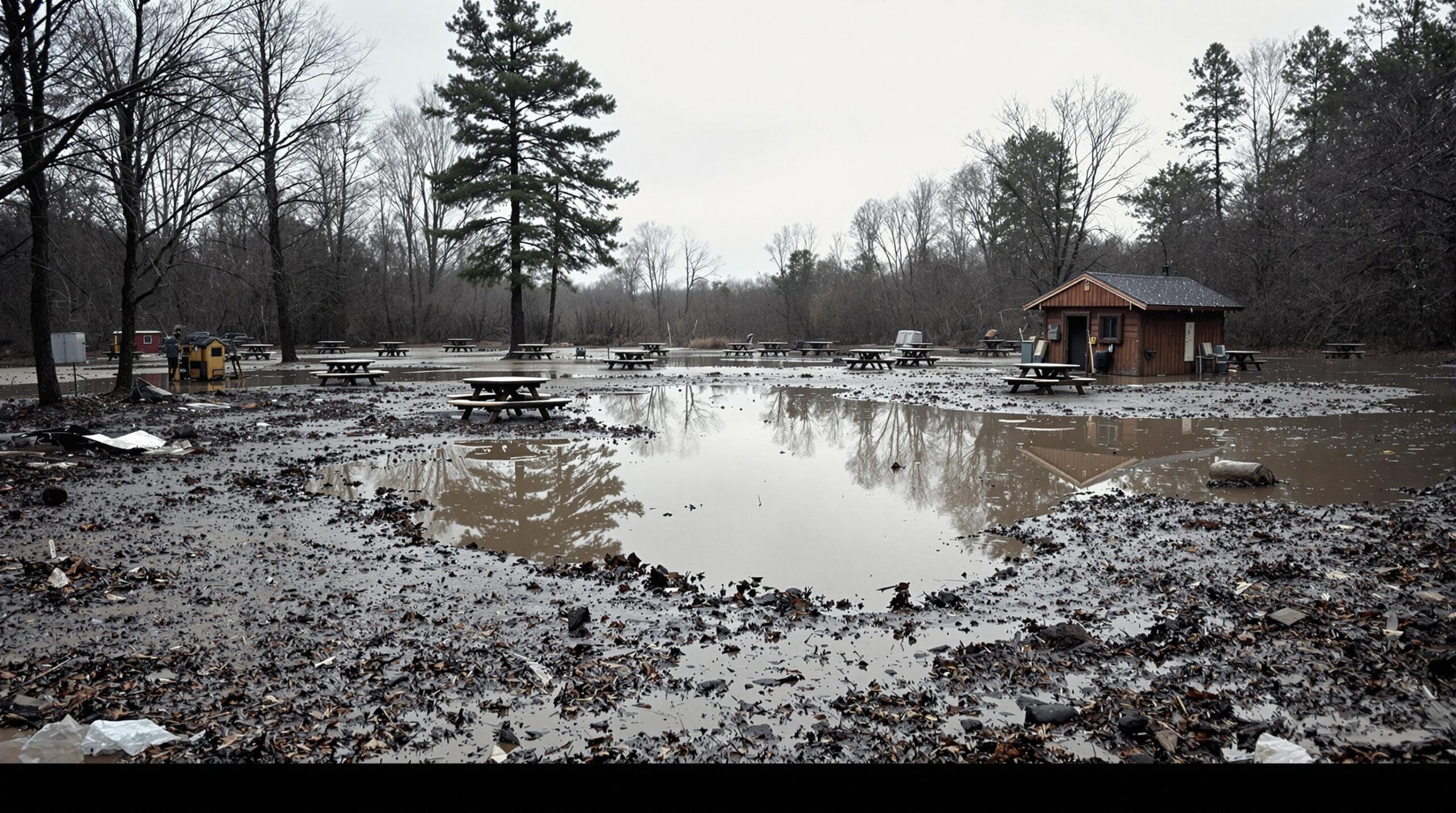Fort Boonesborough State Park has closed its campground through the end of September after a major flood raised the Kentucky River to around 35 feet, which “makes it the fifth biggest in our history, and we had the 13th biggest just seven weeks ago in the middle of February,” according to park manager Jack Winburn, who added, “We hadn’t recovered from the first one when this one hit” the station reports.
The extended impact has prompted the park to focus on repairing electrical systems, lodging amenities, and other utilities crucial for safe visits. Park officials indicate that the historic fort area aims to reopen on April 23, giving visitors partial access even as repairs continue.
Reservations through September will be refunded automatically through Reserve America, eliminating the need for requests or additional paperwork. Officials emphasize that maintaining visitor and staff safety is the top priority while crews clear debris and stabilize damaged structures.
In addition to the campground, picnic areas, boat ramps, and local trails remain closed because of active flood damage. These closures ensure a thorough evaluation of potential hazards, including compromised roads and weakened walkways.
During the severe weather, confusion arose over rumors that 10 spillway gates on Dix Dam had been opened unintentionally. Carrollton Mayor Robb Adams addressed this, saying, “Somewhere there was a miscommunication to us and that was not true,” and, “There are gates open at Dix Dam, but it was planned, so I apologize for the misinformation but it is important that we clear that up” the mayor said.
Consistent crisis communication is championed as a key strategy for avoiding rumors and confusion. One resource on messaging recommends that official updates come from a single reliable channel to protect public trust.
Some industry data indicates that employing a unified, well-coordinated communication channel can reduce misinformation rates or complaint volume by a measurable percentage during severe weather closures. Such efforts often involve staff training, prompt alerts, and cohesive talking points that help guests feel informed and supported.
In many regions, local building codes or federal guidelines suggest installing pedestal heights above known flood levels to protect electrical connections. Certain reports estimate that elevating utility setups can reduce downtime by a significant margin, highlighting how preemptive measures can keep essential services reachable even in high water.
Many campgrounds also use infrastructure improvements designed to withstand historically high-water events. Common measures include positioning electrical pedestals on raised platforms, ensuring short-term flooding does not interrupt power or create hazards.
Strategic drainage systems are another widely accepted approach to direct runoff away from critical areas, preserving roads, walkways, and campsite pads. This helps maintain functionality during extreme weather while reducing long-term damage.
Maintaining a well-prepared disaster recovery plan further bolsters overall resilience. Training staff to follow clear guidelines on emergency supplies, backup power solutions, and phased restoration ensures minimal disruption to operations and a faster return to normal conditions.
Park officials note that recent back-to-back floods have underscored the value of robust readiness measures. Focused investments in protective infrastructure and clear communication procedures can help minimize closures, protect revenue, and cement visitor confidence.
Clarity in guest communication also remains essential for managing refunds and closures. Automated notifications and transparent policy details help maintain trust among potential visitors who may be concerned about scheduling trips during unpredictable weather.
Reports discuss cooperation among Kentucky’s state resorts, including General Butler State Resort Park, to provide shelter for those displaced by widespread flooding. This resource offers temporary lodging as Fort Boonesborough State Park continues its restoration plans.


